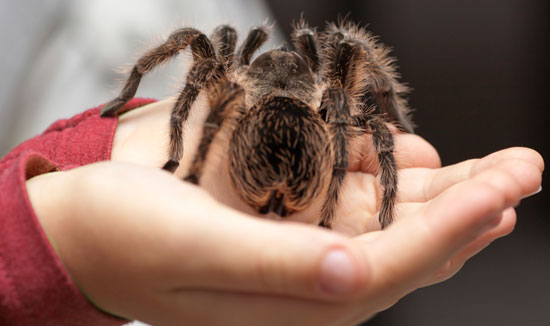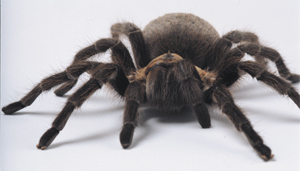How to Keep Spiders as Pets
Spiders can make fascinating pets. Here are a few steps to get you started keeping spiders.

Step 1: Catch a spider
Spiders are all around us, indoors and out, so they’re not hard to find. Some species can bite and a few are venomous. Learn about dangerous spiders in your area before heading out. It’s easy to safely catch a spider by using a small jar. Gently coax it into the jar using the lid. Spiders will eat each other, so keep only one per jar.
Step 2: Prepare a cage
Large spiders do well in the inexpensive plastic terrariums available from pet stores. Smaller ones can be kept in jars or plastic containers if air holes are drilled into the lid or sides. Be sure the holes are small enough to prevent escape.
Potting soil makes good cover for the cage bottom. Sticks, dead leaves or artificial plants provide structure for hiding, climbing and webbing.
Step 3: Water
Depending on the size of the spider, anything from a plastic bottle cap to a small bowl can serve as a water dish. Spiders also drink water sprayed on webbing, but you should never allow the cage to become damp.
Step 4: Feeding
Offer insect prey once or twice a week. Crickets are available from pet shops, or you can collect insects outdoors if no insecticides have been sprayed in the area.
Step 5: Observing
Watch your spider and take notes on its behavior. You won’t believe what happens in the spider’s web until you’ve visited it yourself!
PREFERRED PETS
 Not all spiders do well in captivity. Active hunters are usually easier to keep than web builders. Here are a few that make good pets.
Not all spiders do well in captivity. Active hunters are usually easier to keep than web builders. Here are a few that make good pets.
Tarantulas: Some species exceed 10 inches in legspan. They’re by far the most popular pet spiders and can be bought in pet stores.
Wolf Spiders: Some can be more than three inches in legspan. Large specimens do best in terrariums with lots of floor space.
Jumping Spiders: Although small and rarely exceeding half an inch, their jumping ability is amazing. Many species are brightly colored and can easily be kept in jars.
Fishing Spiders: In captivity, these large spiders appreciate vertically arranged pieces of bark for climbing. They’re very fast, so use caution when capturing them.
Grass Spiders: These spiders build funnel-shaped webs in grass, bushes and on buildings. In captivity, they will build extensive webs inside their cage.
LEARN MORE: Click here to see photos of a spider expert’s seven favorite spiders
hey,this is great!
Tarantulas. No doubt about it, I have a rose hair tarantula(one of nicest tarantulas) and I handle it every day I can.
I feed my wolf spider smaller spiders and half dead flies
T LOVE SPIDERS I USED TO HAVE A TARANTULA.
do wolf spiders eat rolly pollies?
Yes,Wolf spiders do eat rolly pollies,-That is good as they,if left alone in their natural habitat,act as a cheap insect repellent!
what is the most deadly spiders
Brazilian wandering spider
black widows and brown recluse
Keeping Tegenaria duellica that I found at home its quite large been feeding it crickets it loves them, It seems o.k enough in perspects container will it be o.k? And can I just spray water in once and a while?
I have a pet grass spider and his favorite food is crickets, but where can you find food in the winter?
You can buy feeder crickets and other insects from pet stores to feed your arachnid pal through the winter.
I just found a crab spider in my house and now she’s my pet
what typeof screen do i use to block the opening?
Replying to spiderzilla. it’s probaly a hunting spider like a wolf spider or crab spider
I have a Daring Jumping Spider. Do the hibernate in the winter?? How and what do I feed him in the winter when bugs are scarous to none???
If you can, feed Daring Jumping Spiders flies that you trap with a can, or even easier, catch a smaller normal house spider that lives in your window and other places around your house.
I just caught a sow hunter red with white sacrum for a class pet any advice on habitat. I’m trying to feed it some pill bugs as that is what I assume it eats! Please advise!(: also how large of a terrarium should I create for this girl. I don’t want to crowd her